Ideas into movement
Boost TNI's work
50 years. Hundreds of social struggles. Countless ideas turned into movement.
Support us as we celebrate our 50th anniversary in 2024.

For the 12th edition of the State of Power report, TNI worked with the New York artist, Matt Rota. Here he shares his creative approach when diving into an eye-opening and inspiring project.
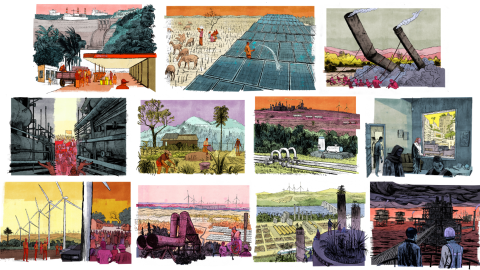
Illustrations by Matt Rota
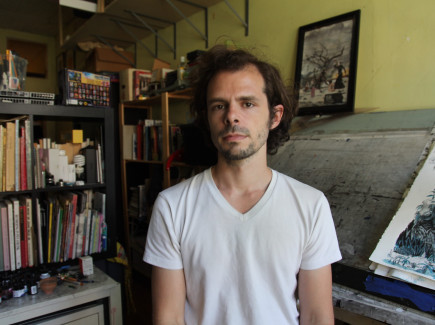
Illustrator, author and instructor, Matt Rota has worked in print and online with clients including the New York Times, Penguin Books, The Washington Post, amongst others. He has also taught illustration at the Maryland Institute College of Art and the School of Visual Arts in the United States. He exhibits his drawings internationally, and his work is regularly included in the annuals American Illustration, and Society of Illustrators.
Working on the illustrations for this project was incredibly eye-opening. The essays were in-depth and insightful. Coming from the U.S. I feel like we have a very defeatist attitude when it comes to the future of energy, the environment, and the survival of life on this planet. The problems seem insurmountable. Our petrol companies are so dominant, they dictate the policy which our government follows. It seems impossible to imagine a future where renewable energy is taken seriously. After reading these essays I feel like our perspective in the U.S. exists in a bubble. We have a tendency to turn inwards here, to disengage from political and social action. We turn away from what’s happening in the rest of the world, sadly.
It’s very refreshing to learn about the hard work being undertaken in other parts of the world. There is real action taking place, a lot of hard work being done to shape the future of energy, much of it in developing nations in the global south. These essays don’t paint an overly optimistic view, it was important to read about the challenges that accompany the transition to renewable energy, the issues of profit and land ownership, large land acquisitions and privatizations, as well as the environmental hazards and degradation of local communities by large corporate interests. However, this project was able to capture a sweeping view of the state of global energy while presenting possible future solutions to our current problems.
In deciding on what imagery to use in the artwork, my main interest was location and accuracy. Much of the essays focused on abstract concepts of politics, policy, and power. Each story was set in a specific region and dealt with specific groups of people and technology. My question when I was reading this is what are the implications of these stories in real life, what are the real-life consequences, and what does it look like where these events are unfolding? So I did a lot of research on each location, each bit of technology, and the people involved, how all of these things were physically engaging with each other.
Once the settings and other particulars were addressed, it was important to establish a point of view. The tone of much of the writing was fact-based based, very analytical. But however I approached the artwork, the imagery was going to have a tone, a kind of atmosphere that would color the articles with a mood, a sense of optimism or pessimism. I want to be clear on that, while not trying to force too much of a false sentiment into the images. If there is too much of an optimistic mood, the sentiment can feel false and may affect the way a reader approaches the article, it may make the writing feel more insincere. If I were to create images that were too gloomy or pessimistic, a sense of hopelessness may hang over the writing.
What I felt from reading these essays was something more complex, the writers did a good job of communicating both progress and setbacks, as we move into a world that embraces change and renewable energy, progress and setbacks move hand in hand, and new innovations displace old problems into new ones. It was important for me to address this tension in my drawings.
After this project, I feel like I have a much clearer, more sober, and far more global perspective on how the effort to transition to renewable energy is affecting the world right now, and what conflicts and solutions will be taking shape in the future.
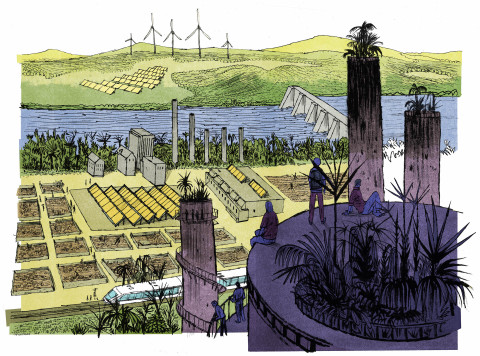
Illustration by Matt Rota©
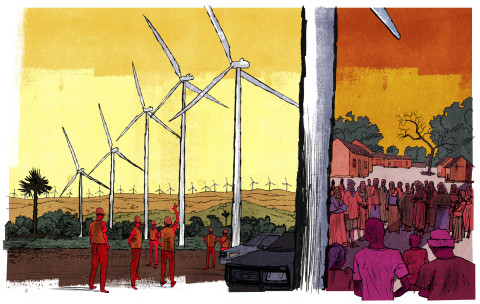
Illustration by Matt Rota©
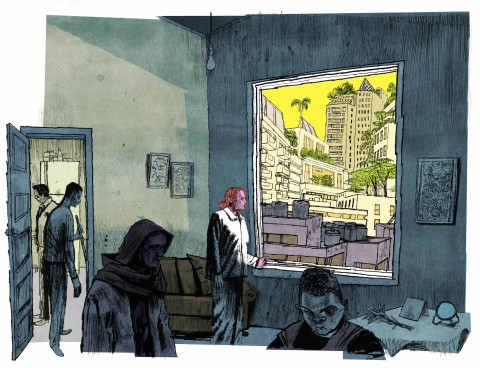
Illustration by Matt Rota©
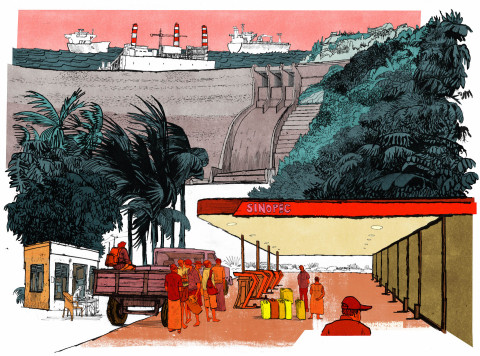
Illustration by Matt Rota©
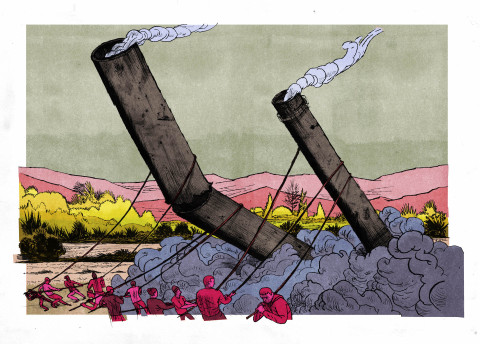
Illustration by Matt Rota©
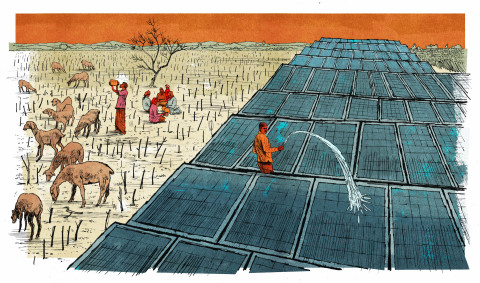
Illustration by Matt Rota©
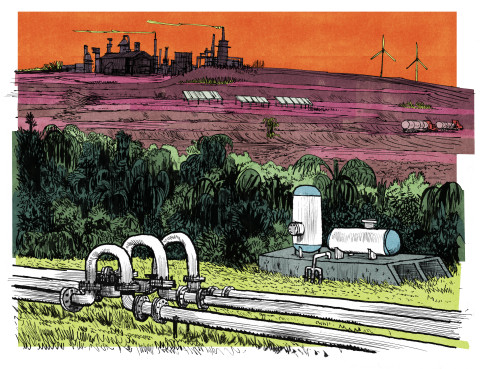
Illustration by Matt Rota©
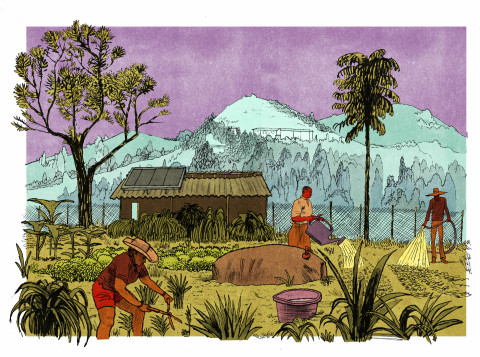
Illustration by Matt Rota©
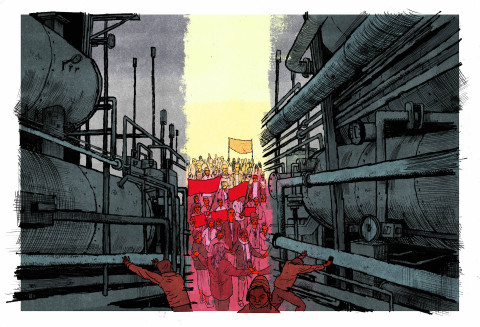
Illustration by Matt Rota©
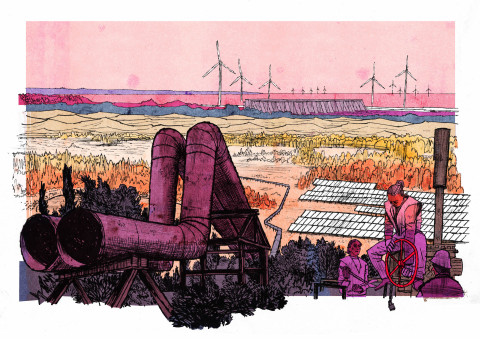
Illustration by Matt Rota©
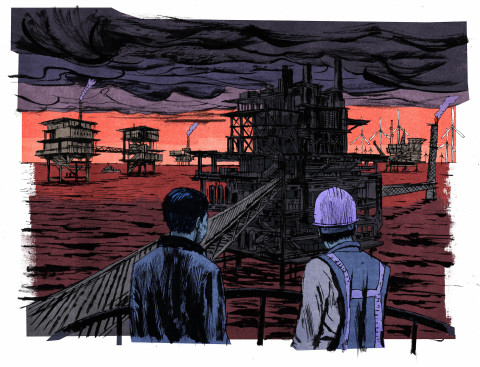
Illustration by Matt Rota©